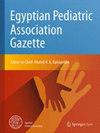三级医院儿科重症监护室的血管通路模式适应症和结果:单中心横断面研究
IF 0.5
Q4 PEDIATRICS
引用次数: 0
摘要
血管通路是儿科重症监护的支柱。血管通路和设备的选择取决于患者和医护人员的具体因素,需要不断修正以实现更有效的评估和管理。目的:评估一家三级大学医院急诊儿科重症监护室(ER-PICU)中重症患儿不同血管通路模式的使用、适应症和结果。这项横断面描述性研究基于对 2020 年 5 月至 10 月的 6 个月期间急诊儿科重症监护室连续收治的 168 名患者所使用的所有血管通路模式进行回顾性分析所收集的数据。研究组(n = 168)中有 92 名男性(54.8%)和 76 名女性(45.2%)。病例年龄中位数为 18 个月。共观察到 333 个血管通路装置:其中外周导管 219 个(占 65.8%),中心导管 114 个(占 34.2%)。导管共使用了 1920 个导管日。中心静脉导管的持续时间明显长于外周导管(P < 0.001);中位数分别为 8.5 天和 3 天。外周管路并发症的发生率(35.2%)明显高于中心静脉导管(22.8%)(P. = 0.021)。中心通路的停留时间越长,导管相关血流感染的发生率越高。导管相关血流感染的发生率为每 1000 个导管日 9.05 例。死亡率为 24.4%。尽管中心静脉导管的并发症发生率低于外周管路,但其并发症被认为更为严重。应每天调整中心静脉导管(CVC)的留置时间,以避免发生感染。本文章由计算机程序翻译,如有差异,请以英文原文为准。
Vascular access modalities in a pediatric intensive care unit in tertiary hospital indications and outcomes: a single-center cross-sectional study
Vascular access is a mainstay of pediatric critical care. The selection of the route of access and equipment used will depend on patient- and provider-specific factors, which constantly need revision to achieve more effective assessment and management. To evaluate the use, indication, and outcome of different vascular access modalities in critically ill children in the Emergency Pediatric Intensive Care Unit (ER-PICU) of a tertiary university hospital. This cross-sectional descriptive study was based on data collected by reviewing all modes of vascular access used for 168 consecutive patients admitted to ER-PICU during a 6-month period from May to October 2020. Among the study group (n = 168), there were 92 males (54.8%) and 76 females (45.2%). The median age of cases was 18 months. 333 vascular access devices were observed: 219 peripheral (65.8%) and 114 central catheters (34.2%). Catheters lasted a total of 1920 catheter days. Central venous catheters lasted significantly more than peripheral lines (P < 0.001); median of 8.5 and 3 days, respectively. The incidence of peripheral line complications (35.2%) was found significantly higher compared to central venous catheters (22.8%) (P. = 0.021). Longer dwell time of central access was associated with a higher incidence of catheter-related bloodstream infection. The incidence of catheter-related bloodstream infection was 9.05 per 1000 catheter days. Mortality rate was 24.4%. Despite having lower incidence of complications than peripheral lines, central venous catheters’ complications are considered more serious. Dwell time of central venous catheters (CVC) should be revised daily to avoid the occurrence of infection.
求助全文
通过发布文献求助,成功后即可免费获取论文全文。
去求助
来源期刊

Egyptian Pediatric Association Gazette
PEDIATRICS-
自引率
0.00%
发文量
32
审稿时长
9 weeks
期刊介绍:
The Gazette is the official journal of the Egyptian Pediatric Association. The main purpose of the Gazette is to provide a place for the publication of high-quality papers documenting recent advances and new developments in both pediatrics and pediatric surgery in clinical and experimental settings. An equally important purpose of the Gazette is to publish local and regional issues related to children and child care. The Gazette welcomes original papers, review articles, case reports and short communications as well as short technical reports. Papers submitted to the Gazette are peer-reviewed by a large review board. The Gazette also offers CME quizzes, credits for which can be claimed from either the EPA website or the EPA headquarters. Fields of interest: all aspects of pediatrics, pediatric surgery, child health and child care. The Gazette complies with the Uniform Requirements for Manuscripts submitted to biomedical journals as recommended by the International Committee of Medical Journal Editors (ICMJE).
 求助内容:
求助内容: 应助结果提醒方式:
应助结果提醒方式:


